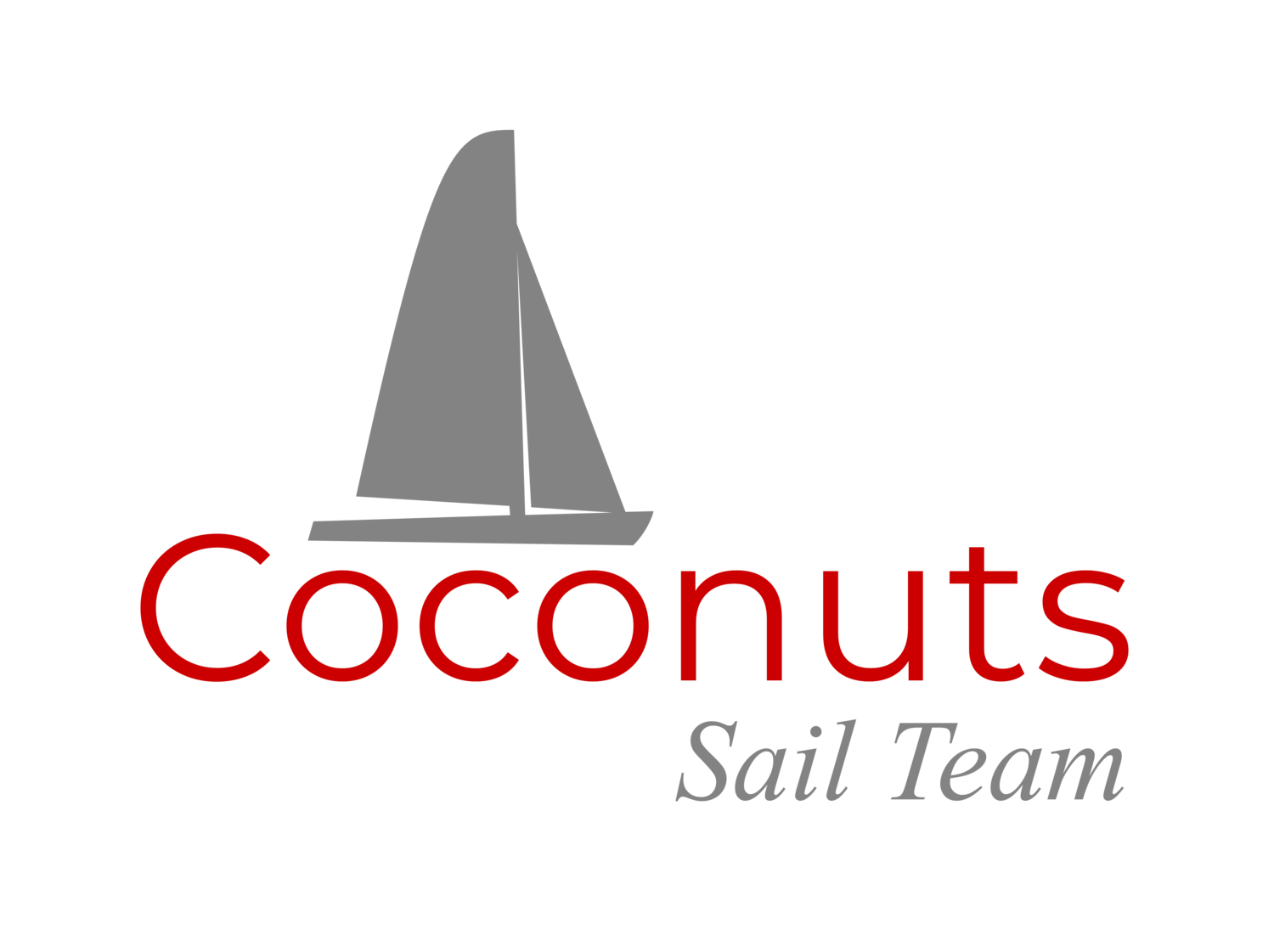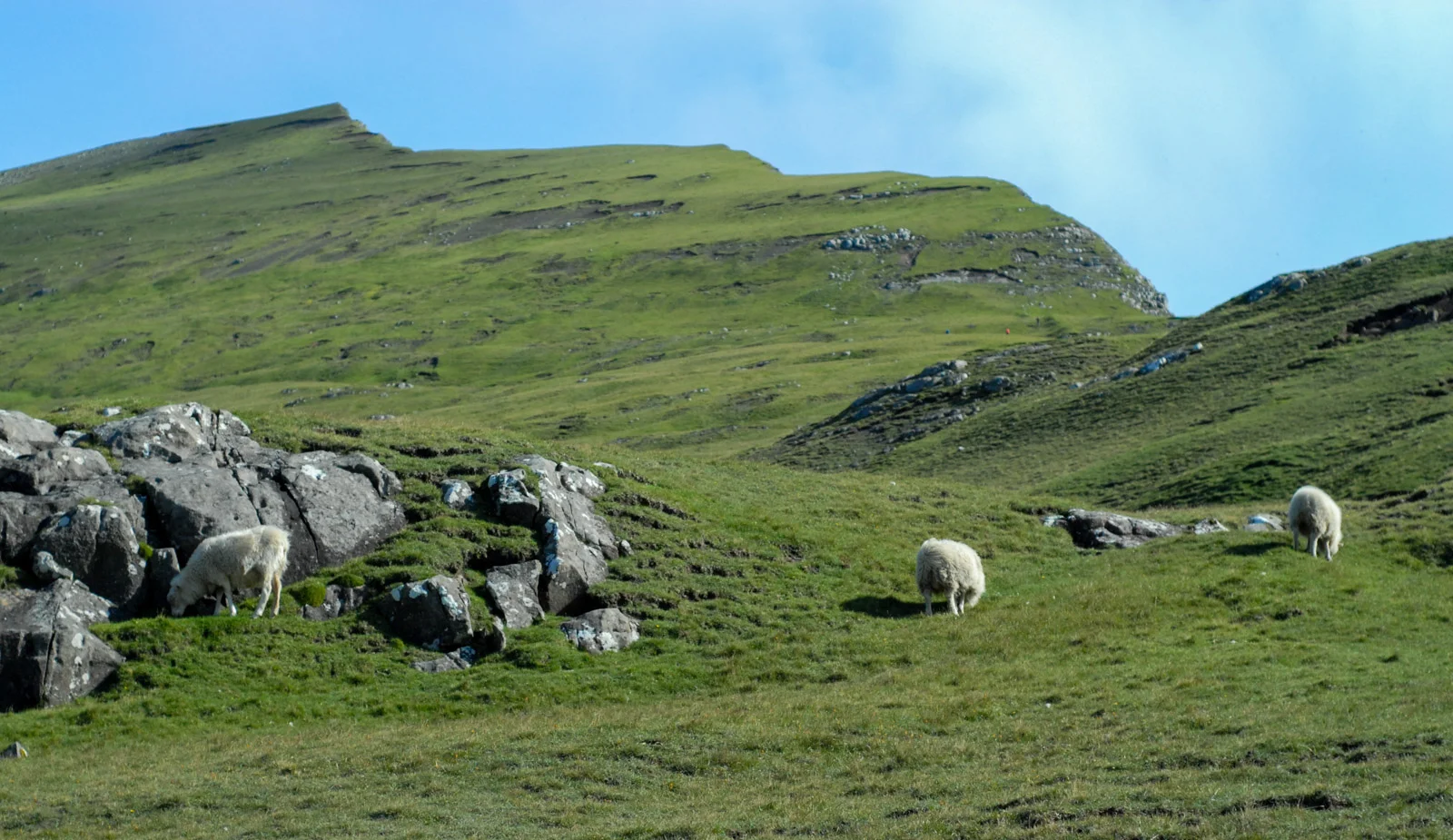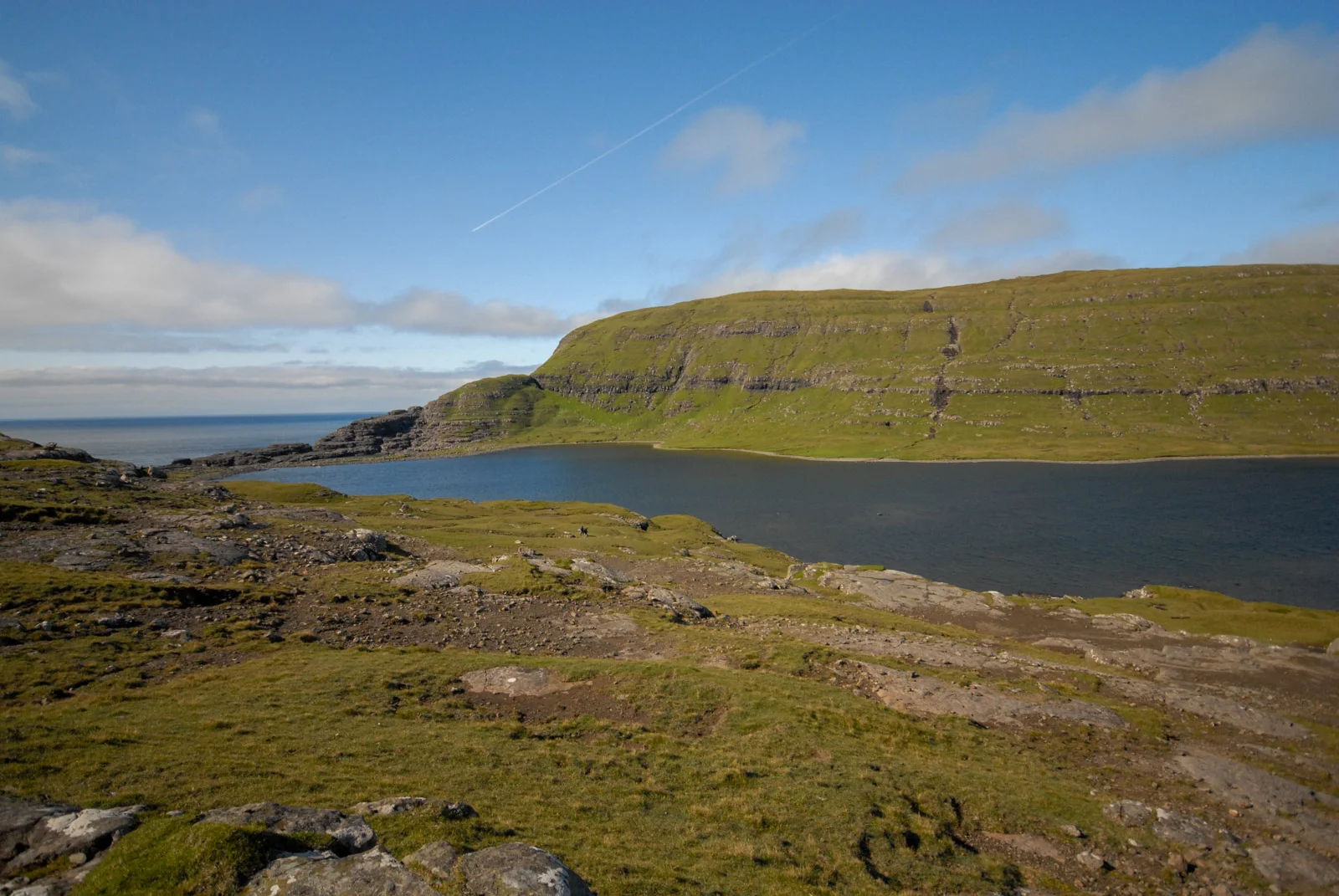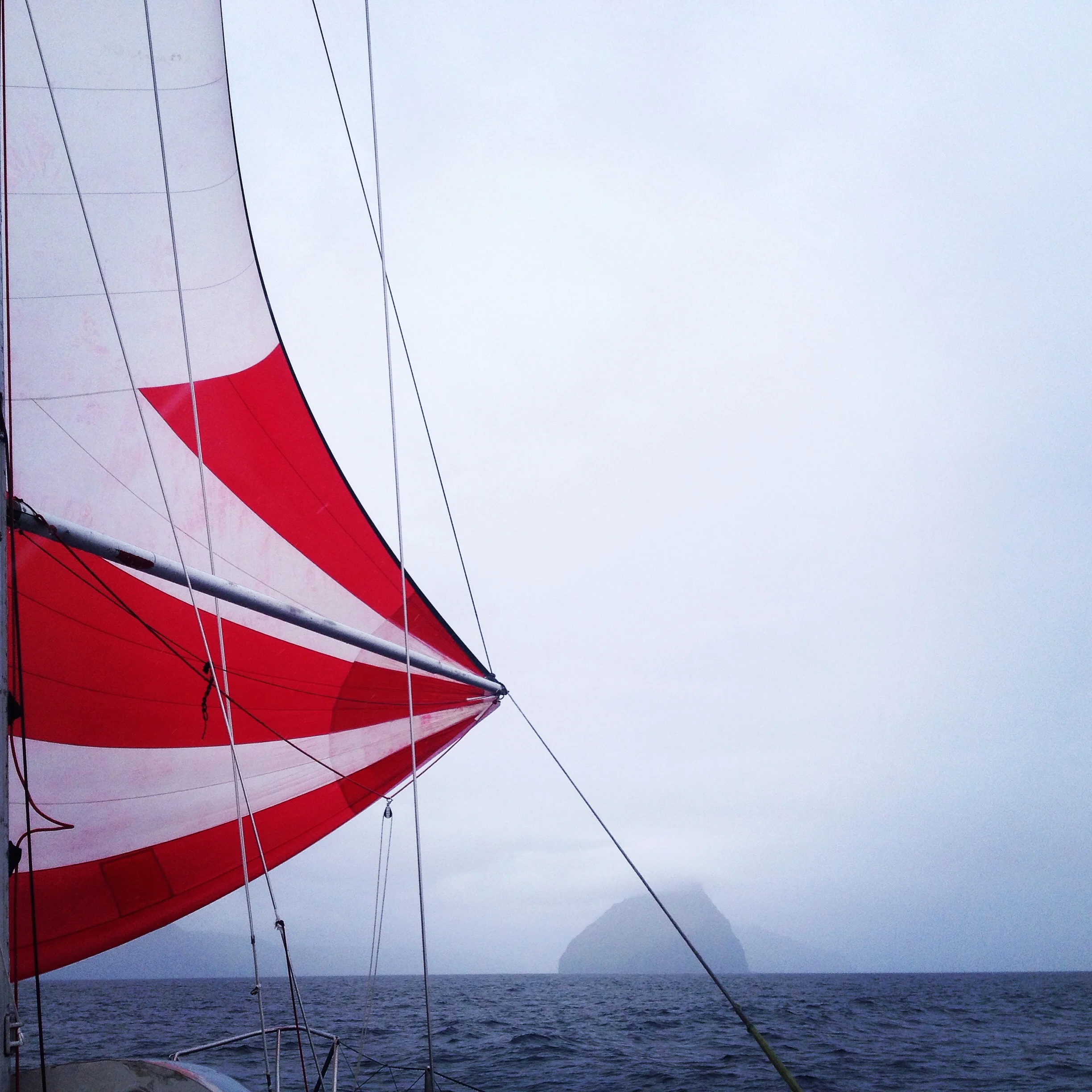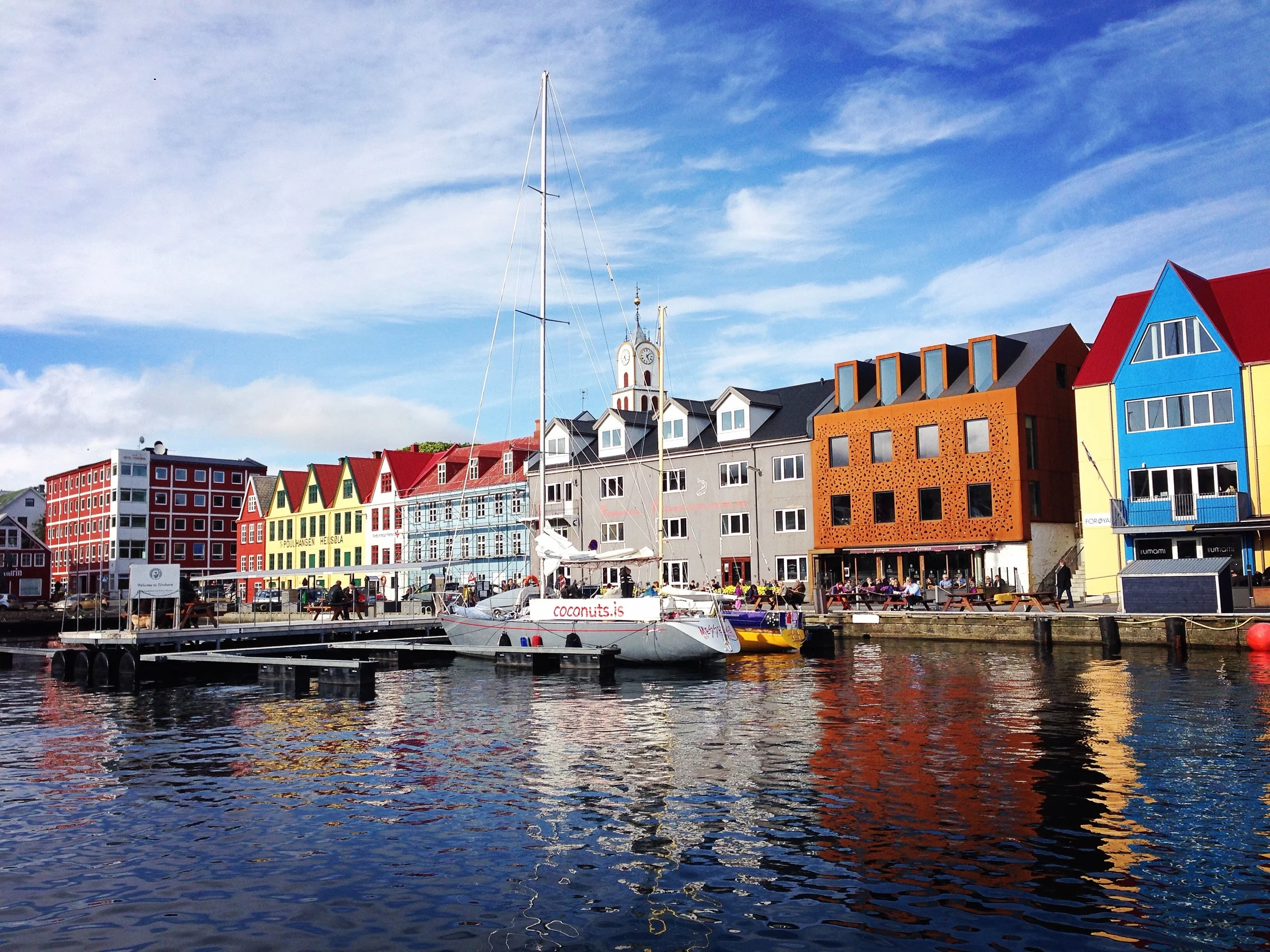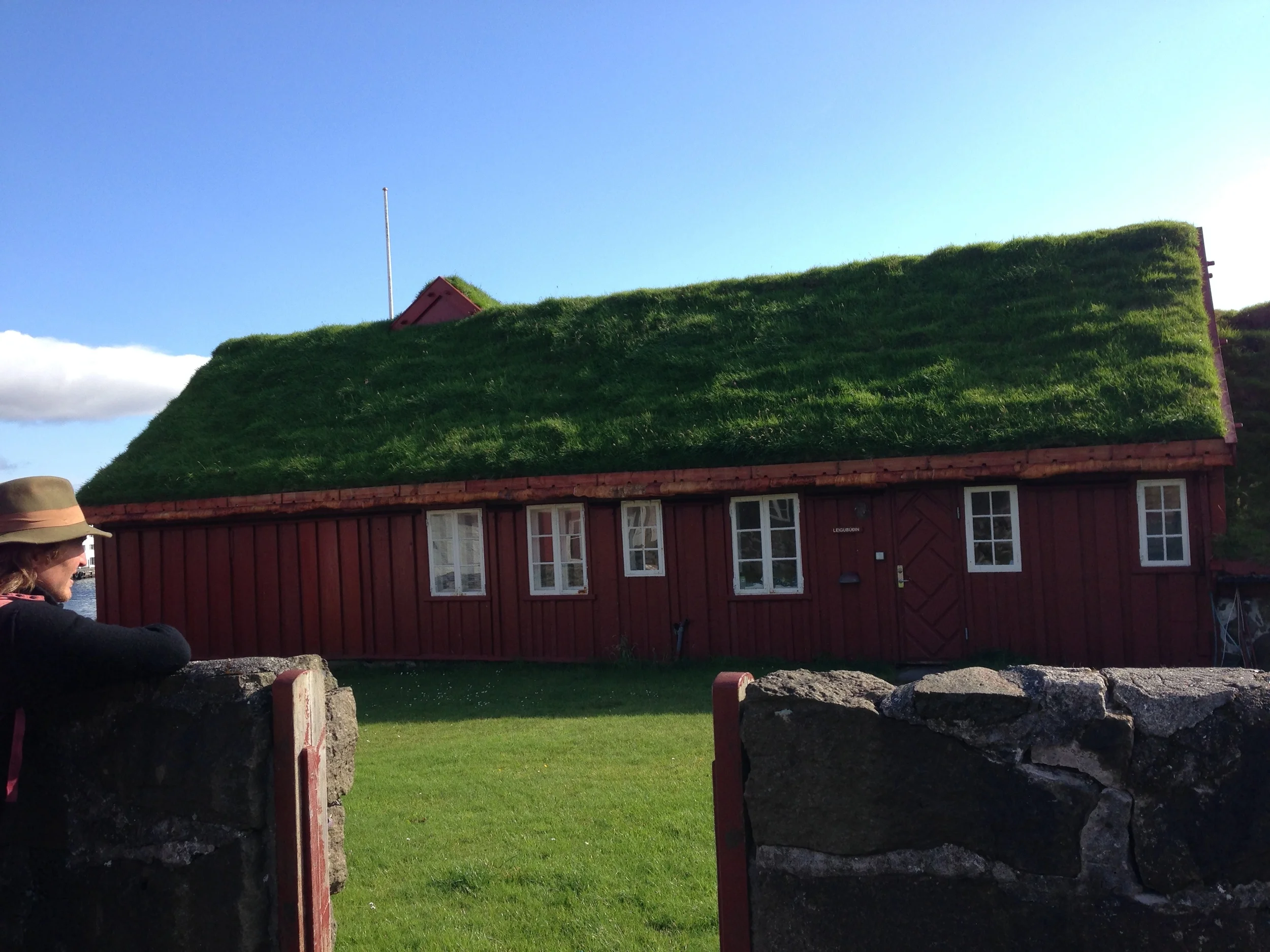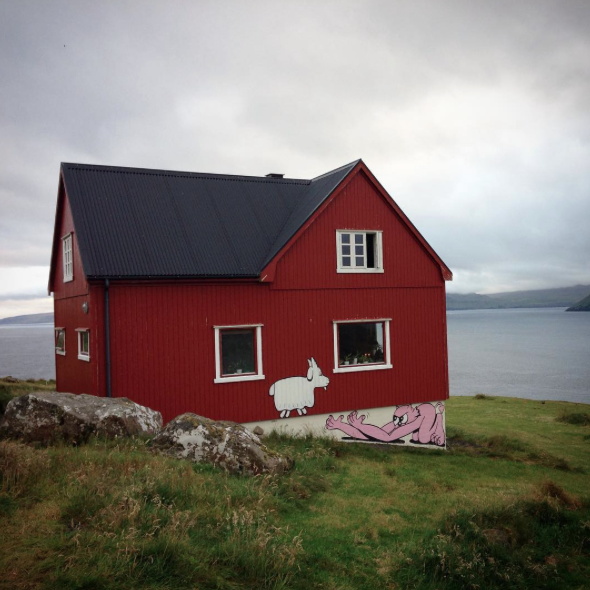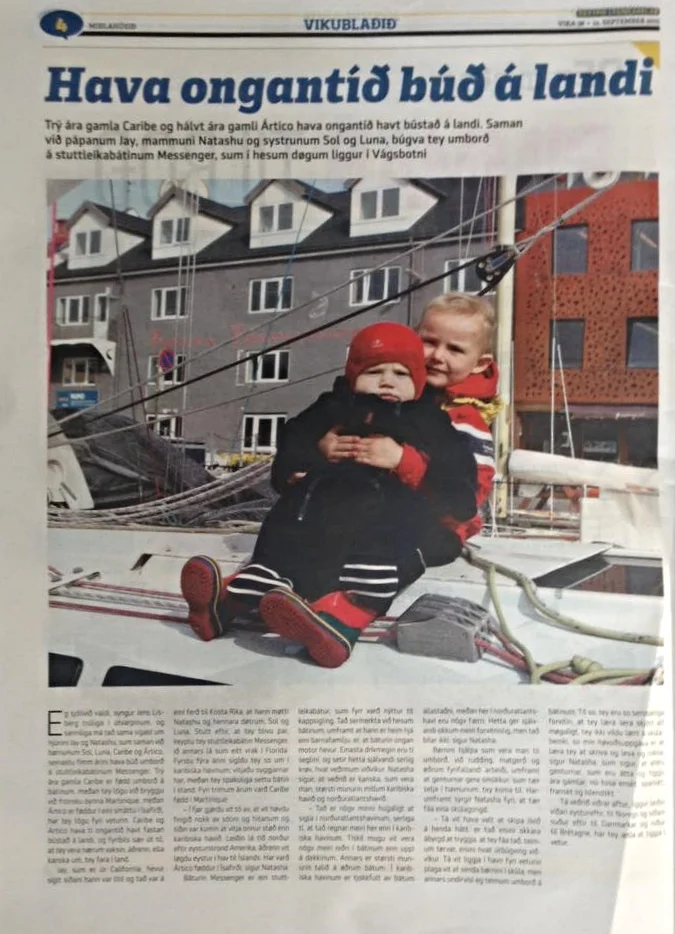Jay, once again, brought Messenger and it’s crew successfully and safely to port in the Faroe Islands or Føroyar, ‘the islands of sheep’, a group of 18 islands out of which 17 are inhabited with a total population of nearly 50,000. We sailed into Midvágur, a small village that lies on the western arm of a fjord on the south coast of the island of Vágar. It’s tucked away in a mole giving it excellent shelter from all directions. We made landfall here first because it's the island in which a good friend grew up on, she now lives in Reykjavik with her family and a personal recommendation is best when picking where to go. We spent about 13 days in total in this archipelago of islands. First we were in Midvágur for about 4 days and then we moved to Tórshavn, known as the worlds smallest capital. Though we only visited 2 out of the 18 islands we feel we got to experience the true essence of this country and most important to us, it’s people.
As all small islands surrounded by so much ocean the weather here is quite changeable, from moments of brilliant sunshine to misty hill fog, to showers, all within a day; the incidence of fog in summer is high, about one day in four. The group of islands is the heavily weathered remainder of a plateau laid down in a series of volcanic eruptions, the effect is one of incredibly beautiful green slopes broken by steps and vertical cliffs which have dense seabird breeding colonies. There are virtually no trees, some cultivation is to be found on the lower levels where small patches of potatoes are grown and sheep graze the hills. The erosion of the plateau has resulted in some deep sounds between the islands through which forceful tides stream, with rips and races offshore which are influenced by the North Atlantic Current.
Since 1948, the Faroe Islands have been a self governing region of the Kingdom of Denmark, they do print their own currency, the króna, it’s exchange value is equivalent to the Danish krone and both forms of note circulate and are freely interchangeable though the coinage is Danish. It has its own parliament and its own flag. It is not, however, a member of the European Union and all trade is governed by special treaties. When we arrived on September 1st it was election day therefore everything was closed. The fishing industry is the most important source of income for the Faroese, tourism the second largest, followed by woolen goods. Faroese is the national language which is rooted in Old Norse, I was surprised at how much more of it I understood than Icelandic, it seams as if there is some Portuguese influence.
In Midvágur we went on a spectacular walk along Sørvágsvatn, the largest lake in the Faroes, to the enchanting waterfall called Bøsadalafossur which cascades 35m from the lake into the ocean. There we had a picnic and lay in the green grass soaking up the sun like desperate solar panels.
During our stay in Midvágur we met Drake and Monique from s/v (sailing vessel) Paragon who filmed and interviewed us for their YouTube Channel episodes and also had us over to their boat for a lovely dinner, for which Jay bought some local Faroese beers. I really liked the Føroya Bjór, a 125 year old prize winning beer whose brewery is at the forefront of developing a small niche market of beers containing rhubarb, angelica and other herbs. Drake and Monique are an adventurous couple who are also “living the life”.
We also met Paulina and her husband Hjalmar who where cleaning their typical Faroe boat which is closely related to the Viking longship. I stopped to ask if they knew of a hostel nearby, which I had read in a cruising guide, that offered showers. Paulina offered to drive us there eventhough her and her husband were in the middle of what looked like some busy work, but not only did they drive us there, they also gave us some Danish coins which we needed to pay for the showers, since we had just arrived we still had no local currency. As they dropped us off they offered to pick us back up in an hour to drive us back to the boat. The shower was lovely and greatly appreciated as always after any passage. When they returned they had ice creams in the car for the kids. Then later on that evening they brought us some local foods from their freezer for us to try. Birds such as puffins, guillemots and fulmars are historically an important food for the Faroese and they are still eaten regularly today. They brought us some young fulmar which was similar to puffin which we had tried in Iceland, both a very strong gamey yet fishy meat. They also brought us whale, which is typically boiled in water together with whale blubber and potatoes. We had also tasted whale before in Iceland but there we tried it grilled. Whale is a dark strong meat similar to seal which we tasted in Newfoundland a year ago. Several hundred pilot whales are hunted annually for food in the Faroes in the summer using small boats to herd them into shallow bays. This has been a tradition for thousands of years. Limits are set on both the birds and whales to ensure that it’s sustainable. We invited Paulina and Hjalmar to come back for coffee the next day which they did but didn’t come empty-handed, they brought 3 desserts and coloring books and markers for the girls. All the Norse people we have met while sailing in Northern latitudes have received us with warm hospitality and extravagant kindness, both in Iceland and in the Faroes.
The day we were to leave Midvágur to sail 20nm a short 4hrs away Paulina showed up at breakfast time with a stack of waffles, whipped cream, marmalades and chocolate milk for us. When we were exiting out the mole Paulina and Hjalmar were waiving us goodbye from shore. Leaving with us was also s/v Paragon who were filming our “song and dance” that we perform upon exiting without an engine. Unfortunately it was overcast, foggy and rainy with light wind but regardless on the VHF radio Paragon let us know they got some great footage of Messenger with the spinnaker.
The harbor at Tórshavn was small and crowded with small fishing boats, the guest slip wasn’t easily accessible under sail so we had to perform a bit of a crash landing which only toke off a small nick of paint at the bow. Tórshavn was proudly named by the Vikings after the Nordic God of war Thor, with its location in the middle of the country situated on a narrow quay it began as a Viking meeting place, followed by a market, later it became a thriving town and today it has developed into a charming mini version of a modern city.
On its narrow stone quay lies Tinganes where narrow alleys meander between old black tarred houses with traditional grass roofs. Tinganes is one of the world’s oldest courts dating back to the year 825 where the Vikings held their legislative assembly and its still the home of the national government. Rising between the old and the new today Tórshavn is characterized by old warehouses alongside modern architectural buildings with facades of bright rich colors, cafés, outdoor fish market, restaurants, pubs, boutiques with designer clothes and traditional Faroese wool designs, all in an electric mix of new and old.
There was a newly built boat club that offered visiting yachts showers, laundry and wifi, lucky for us all free of charge perhaps because the sailing season was over. We were invited to the clubs 'end of season' BBQ for which occasion the girls got all dressed up for in their 'olden day dresses'. We hadn’t enjoyed wifi from the boat since Nova Scotia a year ago, so that was a nice benefit.
On one beautiful warm and sunny day, amongst many rainy ones, we toke advantage of the nice weather and hiked up over the hills from Tórshavn down to Kirkjubøur, the most important and interesting historic site in the Faroes. The path from one town to the other is marked by stacks of rocks, which have been continuously kept for years, this is how one can stay on the path through the common heavy fog so characteristic of these areas. We were told that each time you pass a stack of rocks you are to place a rock on it and this is how these stacks have been kept for thousands of years by each passerby. The settlement of Kirkjubøur is said to date back to pre-Norse Celtic monks. During the Middle Ages it was the ecclesiastical and cultural center of the Faroes with a church built in those times that is still in use. There is a log house believed to be the oldest in Europe built with wood brought floating here from Norway some 700 to 900 years ago and a farmhouse still in use which has been inhabited by the same family for 17 generations.
During our stay in Tórshavn we befriended a few sailors, Birgir, the Captain of a “pirate ship” and his son Hávardur, as well as Jónas a musician with a recording studio but also the proud owner of an 8m sailboat who dreams of setting out to sea with his family, his wife Annika and their 2 young children. Birgir owns Nordlysid a 1945 wooden schooner which takes tourist on sightseeing trips, on his ship we were invited a couple times for a wonderful dinner and got to try Birgir’s famous fish soup. Along with his son Hávardur they have 2 other sailboats Enniway and Black Lady on which they also offer sailing trips for visitors.
Jónas picked us up one day and drove us to his house where he and his wife Annika prepared a lovely dinner with lamb from their families farm. We enjoyed some nice wine and conversation overlooking their spectacular view from their dinning room while our kids played with theirs, needless to say we hit it off as if we had been friends for years.
One day we heard a knock on the hull of the boat, it was Paulina and her daughter on a surprised visit, they brought us a traditional Faroese snack, a slice of dried whale meat with a slice of salted whale blubber and a halfed cooked potato on top, very yummy.
Headline reads "They have never lived on land."
The radio station KVF came by to interview us, Jay and the girls were gone so they were only able to interview me. The reporter Kári Olsen did a great job. The newspaper Vikubladid also came by and interviewed us, they returned the next day with their photographer to snap a photo of the kids which had been born while living on the boat, they published a large photo of Caribe holding Ártico on deck.
After our usual grocery provisioning and our traditional ice-cream outing before setting sail from any place we were ready for departure, on to discover new places and meet new interesting people.
